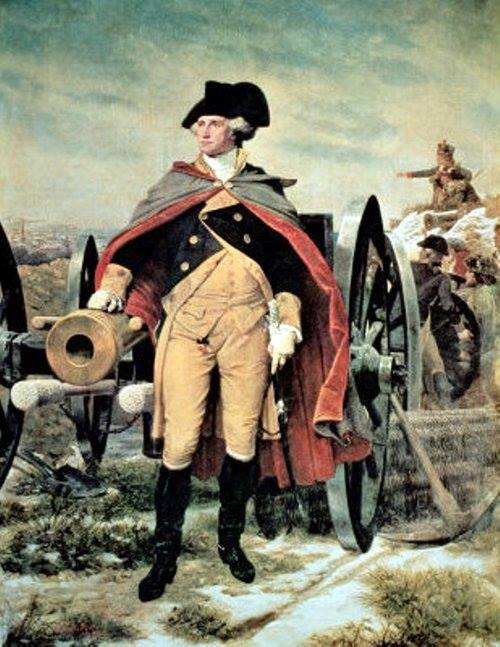On This Day in History -
April 11, 1783
Congress declares a permanent ceasefire
On this day in history, April 11, 1783, Congress declares a permanent ceasefire with Great Britain, bringing the hostilities of the American Revolution to an end. The American Revolution began as a result of increasing efforts of Parliament to control her American colonies. After the French and Indian War ended in 1763, Parliament attempted to extract more taxes from the colonists in order to make up the heavy debt incurred during the war and to pay for soldiers stationed in the colonies to police the territory gained in the war.
The colonists rejected the taxes primarily because they had no representation in Parliament and they believed this "taxation without representation" was unfair. They believed governments should govern "with the consent of the governed." Parliament continued with various schemes of taxation over the next decade and the colonists became increasingly rebellious.
Britain eventually occupied Boston, which was viewed as the center of the resistance. After the war broke out on April 19, 1775 at Lexington, the Americans soon surrounded Boston and forced the British to leave the city. This illustrates the problem Britain had for the entire war. She was able to control the cities with an occupying army, but controlling the entire countryside was impossible. The territory was simply too large to control, even for the largest army in the world.
After France, Spain and Holland joined the war on the American side, Britain was faced with a world war, with theatres from the Caribbean to the Mediterranean to India. She was actually forced to withdraw soldiers from North America to defend other areas and create a new American strategy. This resulted in the Southern Strategy in which Britain withdrew from the north and tried to capture the southern colonies. Again, the large cities were easy to take, but the countryside was impossible.
Southern commanders such as Nathanael Greene were able to wear out the army of British General Charles Cornwallis by drawing them into long marches inland. Eventually, Cornwallis was forced to flee to the coast, hoping for reinforcements. A large French fleet blocked the reinforcements from landing at Yorktown, Virginia and George Washington was able to trap Cornwallis and force his surrender.
The surrender of Cornwallis' army disheartened Parliament enough that it was ready to concede the war. Peace negotiations began and the preliminary Treaty of Paris was signed on November 30, 1782. Parliament ratified the preliminary treaty on January 20, 1783 and declared a ceasefire on February 4. Congress declared a ceasefire on April 11, 1783 and ratified the treaty on April 15. After more negotiations, the final Treaty of Paris was agreed to by Congress on January 14, 1784 and by Parliament on April 9, 1784, with final copies of the document exchanged in Paris on May 12, 1784.
- Read what happened on other days in American history at our On This Day in History section here.
This Week in History
- April 11, 1783 - Congress declares a permanent ceasefire
- April 12, 1776 - North Carolina is the first state to call for independence
- April 13, 1743 - Thomas Jefferson is born
- April 14, 1789 - George Washington learns he has been elected the first President
- April 15, 1741 - Artist Charles Willson Peale is born
- April 16, 1730 - General, Sir Henry Clinton is born
- April 17, 1790 - Benjamin Franklin dies
Published 4/11/13
Revolutionary War and Beyond Home
Like This Page?
© 2008 - 2022 Revolutionary-War-and-Beyond.com Dan & Jax Bubis













Facebook Comments